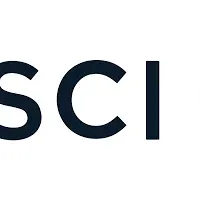
Veterans United Projects an Increase in Home Buyers in 2025 as Market Conditions Improve
Veterans United's 2025 Housing Market Outlook
As we move into 2025, the housing market in the United States is set to undergo significant changes, according to a recent report by Veterans United. After experiencing a tumultuous five years filled with sharp fluctuations, the market is on the brink of a stabilization phase. This evolution is crucial for potential buyers and sellers alike, as several factors come into play.
Stabilization Amidst Challenges
Veterans United's Vice President of Capital Markets, Joe Ellison, emphasized that while the market stabilizes, affordability will continue to pose challenges. The upcoming year will feature a blend of obstacles and chances, primarily centering around the issue of housing affordability. Buyers looking to enter the market will need to navigate a dual landscape characterized by both promising recovery and persistent economic pressures. Although easing mortgage rates can be seen as a beacon of hope for many, inflation and stagnant wages may heavily affect purchasing power. As a result, sellers will likely need to provide more concessions to capture buyers' attention in this competitive market.
Declining Mortgage Rates and its Impacts
One pivotal aspect of the 2025 forecast is the expected decline in mortgage rates. Predictions indicate that rates might average around 6.5%, tapering to as low as 6.3% by year-end. This gradual decrease comes in response to anticipated rate cuts by the Federal Reserve, which aims to alleviate the prevailing pressures on the economy. Nonetheless, the mortgage rates will still remain above 6%, which may deter some potential buyers. Ultimately, the lessening of rates can encourage more individuals who have been hesitant to leap into home buying, particularly first-time buyers and those who can leverage government-backed loan programs.
The Role of Home Prices and Seller Concessions
In contrast to the drop in mortgage rates, home prices are projected to exhibit a modest growth of 3.2% in 2025, driven by sustained demand coupled with limited inventory. Builders are expected to slow down housing starts as they grapple with increased material and labor expenses, which further complicates the supply chain for affordable homes. Given the uphill climb many buyers face, innovative financing solutions targeting first-time and moderate-income buyers are anticipated to gain traction in the market. Furthermore, strategies such as seller concessions, which include incentives like rate buydowns or closing cost assistance, will become essential tools to facilitate smoother transactions.
Inflation Effects on Buyer Behavior
While mortgage rates decline, inflation is expected to remain a significant factor within the economic framework of 2025. With core CPI projected to hover around 3-3.5%, many potential homeowners may find themselves opting for rental solutions instead. Although this projected inflation rate is an improvement from previous spikes, it continues to surpass the Federal Reserve's desired target. Thus, inflation will bring mixed effects to the housing landscape, ensuring that affordability remains a prickly issue while simultaneously restraining housing demand.
Steady Refinancing Activity Ahead
Beyond home buying, refinancing activity is anticipated to remain relatively stable in 2025, representing 15-20% of total mortgage activity. Homeowners looking to draw equity are expected to dominate this segment, with cash-out refinances emerging as a favored option. This popularity stems from homeowners wanting to utilize their equity for renovations or to consolidate debts. Those locked into higher rates above 7% may also find a gradual decline in rates advantageous and might seize the moment to lower monthly payments. However, given the persistently high rate environment, refinancing driven purely by lower rates will not be as attractive as in previous years.
Conclusion
In summary, the housing market outlook for 2025, as described by Veterans United, is filled with opportunities and challenges. Buyers are encouraged to embrace creative financing methods while sellers may need to be agile, offering concessions to thrive. As the year unfolds, with careful navigation of these dynamics, there may be noteworthy developments in the housing sector as we aim for a more balanced recovery.
Topics Financial Services & Investing)










【About Using Articles】
You can freely use the title and article content by linking to the page where the article is posted.
※ Images cannot be used.
【About Links】
Links are free to use.